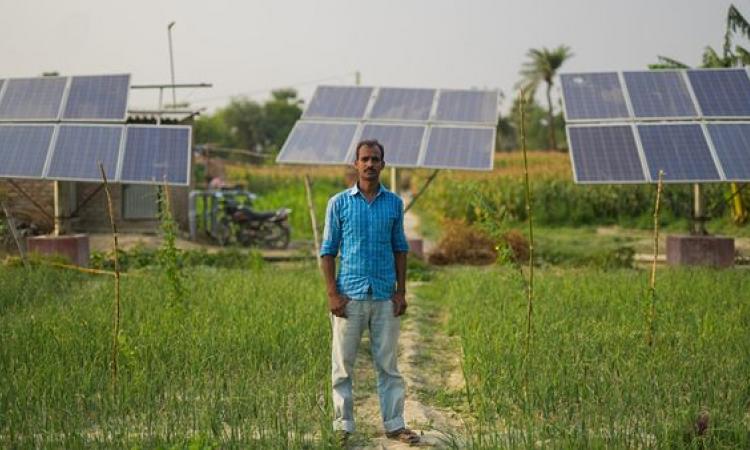
With small and fragmented land holdings, owning a well and pump is not a viable option for all farmers. In this context, the role of irrigation service markets in democratising irrigation access is well documented; NSSO surveys and IWMI’s field studies have suggested that besides irrigating land owned by well owners, India’s roughly 20 million irrigation pumps on average also service lands of two or more neighbouring farmers. However, irrigation service markets exhibit different characteristics in different parts of the country.
In north Bihar – and much of eastern Gangetic flood plains in Nepal Terai, eastern UP, West Bengal and Assam – irrigation service markets are dominated by diesel pumps. Since diesel pumps are few in number, suffer significant wear and tear; and have high maintenance costs, pump owners are able to corner most of the value-added through oligopolistic irrigation service markets. Shah (2008) notes that in eastern UP, between 1990 and 2007, while the cost of diesel increased from ₹4.60/l to ₹34.80/l, the hourly cost of irrigation increased from ₹23-25/hour to ₹90-95/hour.
This suggests that with every increase in diesel prices, water buyers have to endure disproportionately high increases in irrigation cost. As a result, eastern India’s Gangetic aquifers remain underdeveloped and farmers face high irrigation cost. Solar irrigation pumps – which offer zero marginal cost energy – can therefore play a crucial role in lifting the agrarian economy.
Recognizing this potential, the Government of Bihar has tried several policy measures with the objective of improving access to reliable and affordable energy for irrigation. The subsidy in diesel was a short-term solution and did not yield any significant results in irrigation expansion; it also led to significant leakages. The government has also invested in rural grid expansion and this has delivered better energy to rural households, but agriculture remains diesel-dependent.
To draw advantage from the falling costs of solar PV systems, an early experiment was done in 2011-12. 34 community tubewells in Nalanda district were solarized by the Department of Minor Water Resources. Several studies (Tiwary 2012; Kishore et al. 2015; Durga and Verma 2020) have suggested that while the institutional model implemented in Nalanda could be improved, the experiment demonstrated the effectiveness of solar irrigation pumps.
Meanwhile, the Government of Bihar had also announced the Bihar Saur Kranti Sinchai Yojana (BSKSY) where it offered up to 90% capital subsidy on small, 2-3 kWp solar pumps. Durga et al. (2016) reported farmers’ experience with and responses to BSKVY and argued that high capital subsidies limited the reach of the scheme and that the small capacity solar pumps installed were not fully utilized.
With support from CGIAR research programs on Climate Change, Agriculture and Food Security (CCAFS) and Water, Land and Ecosystems (WLE) and in partnership with Aga Khan Rural Support Program, India (AKRSP-I), the International Water Management Institute (IWMI) field-tested an alternate model of solarizing Bihar’s agriculture through its pilot in Chakhaji village in Samastipur district of north Bihar.
In Chakhaji, instead of promoting individual solar pumps, IWMI and AKRSP-I sought our enterprising farmers who were each offered 5 kWp solar pumps along with a 1000-feet long network of buried water distribution pipes. The pilot also tested a novel financial model under which the solar irrigation entrepreneurs – also called, solar irrigation service providers (sISP) – made small upfront contribution but over time, invested 40-50% of the capital cost through annual instalments. The entrepreneurs were able to pay these instalments through earnings from selling irrigation service to neighbouring farmers.
The pilot started with seven sISP and has now grown to 22 solar entrepreneurs operating in and around Chakhaji. Within a year of operation, the experiment showed significant positive results. The effective cost of irrigation for water buyers declined by more than 50%; this crowded out almost all the diesel pumps operating in the area, also contributing to reduced pollution; farmers started practising pre-monsoon sowing of kharif crops, and this also left more time for a third, summer crop; the gross cropped area significantly increased, as did the overall value of agricultural output (see Durga and Rai 2019; Banerjee and Kumar 2019; IWMI 2019).